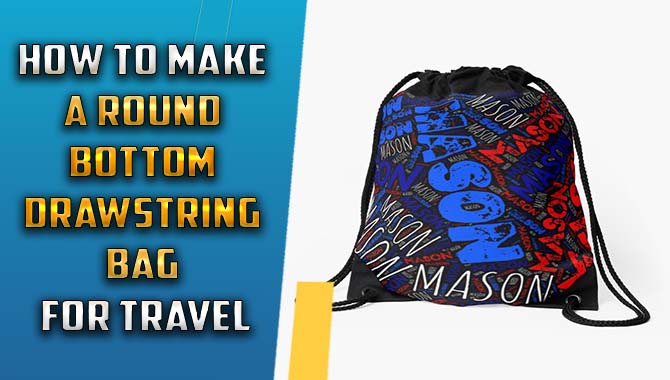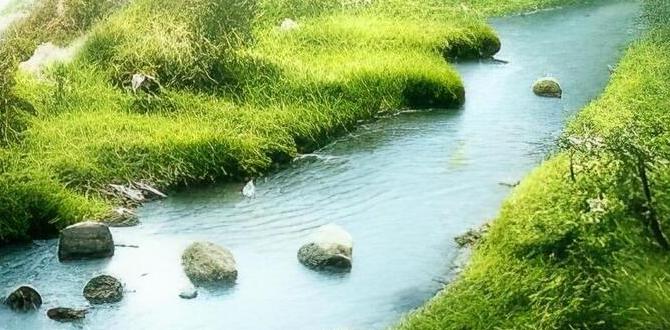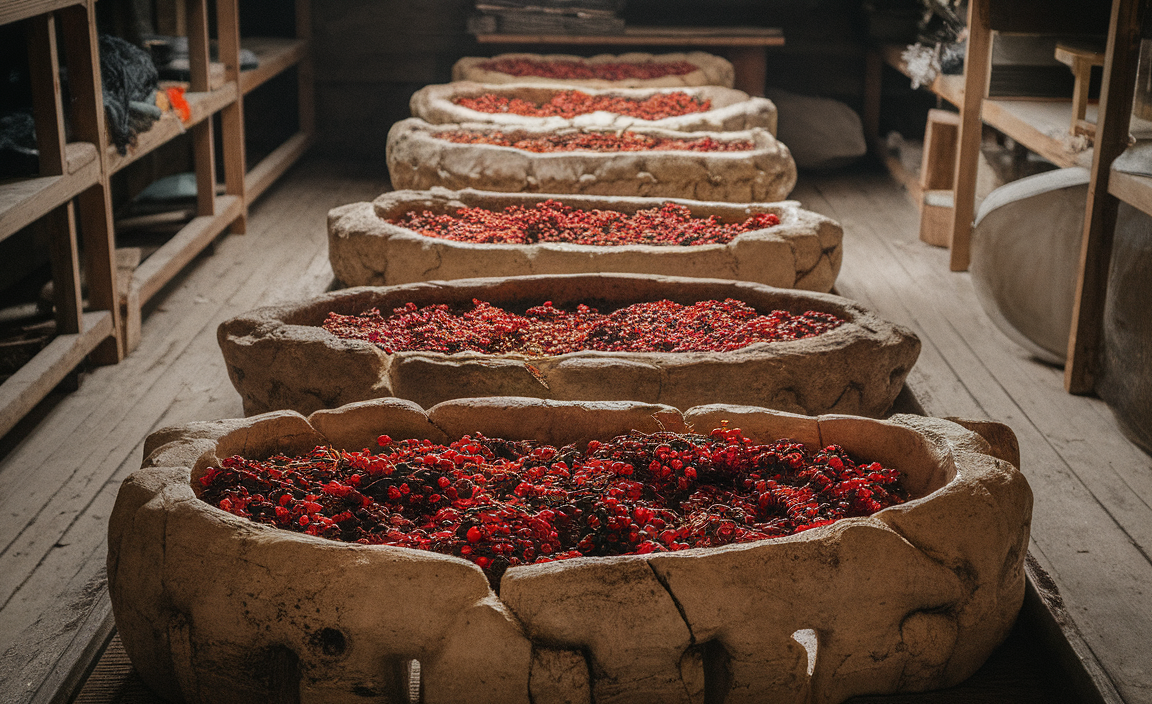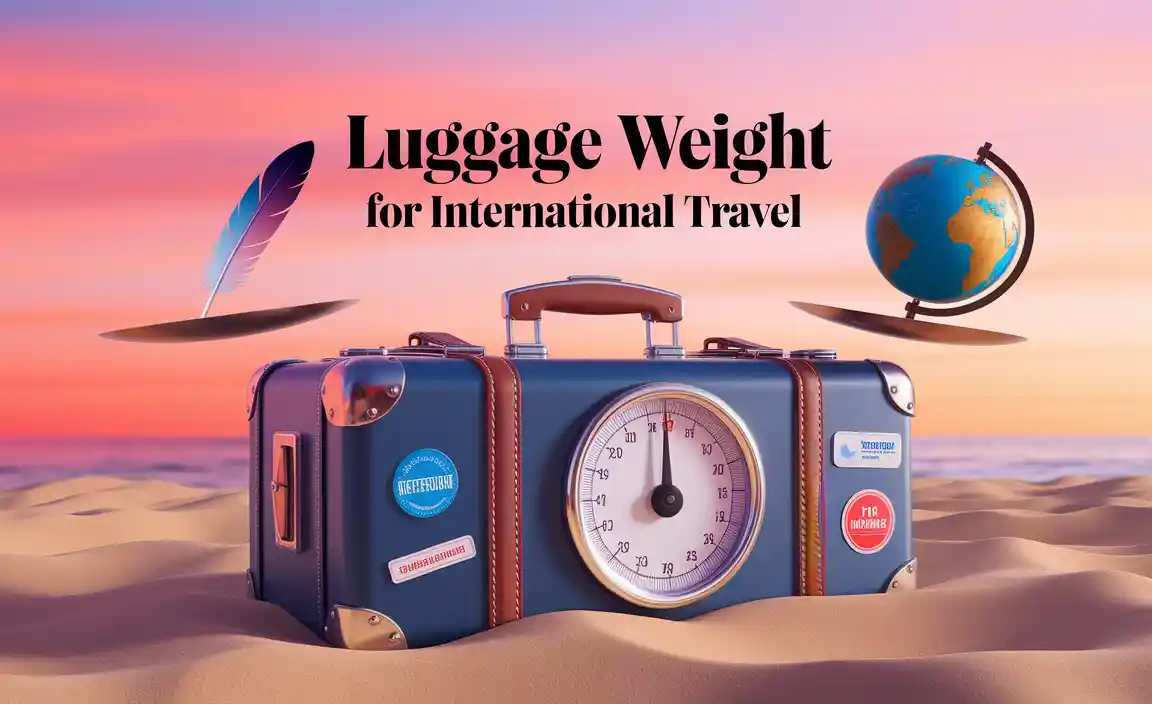Packing for the Atacama Desert carry-on only is totally achievable! Focus on versatile, lightweight layers for extreme temperature swings, sun protection, and comfort. This guide breaks down exactly what you need for an unforgettable, stress-free adventure in Chile’s driest desert.
Heading to the Atacama Desert is an incredible adventure! It’s a place of stark beauty, from salt flats and geysers to starry nights. But packing for such an extreme environment, especially with just a carry-on, can feel a bit daunting.
You need to prepare for intense sun, surprisingly cold nights, and varied activities. Don’t worry, though! We’re going to walk through exactly what to pack to keep you comfortable, prepared, and light on your feet. Get ready for an amazing trip without the baggage!
Understanding Atacama’s Climate for Packing
The Atacama Desert is known as one of the driest places on Earth, but its climate is surprisingly dynamic. Daytime temperatures can soar, especially in the summer months (December to February), feeling quite hot under the direct sun. However, once the sun dips below the horizon, or even at higher altitudes like the El Tatio geysers, temperatures can plummet dramatically, often falling below freezing. This vast difference between day and night is the most crucial factor influencing your packing strategy.
Rain is incredibly rare, making it a fantastic destination year-round for stargazing. However, the lack of humidity and the intense sun mean that dehydration and sunburn are significant risks. Therefore, your packing list needs to prioritize sun protection and breathable, layered clothing. We’ll focus on items that can serve multiple purposes to maximize your carry-on space.
Essential Clothing for Atacama Desert Carry-On Packing
The key to packing for the Atacama is layering. You’ll want items that can be easily added or removed to adapt to the changing temperatures. Think breathable fabrics that wick moisture to keep you comfortable during the day and warm enough for chilly evenings.
Tops for Day and Night
- Moisture-Wicking Base Layers (2-3): Synthetic or merino wool tops are ideal. They keep you cool when it’s warm and retain heat when it’s cold, plus they dry quickly. A long-sleeved version is excellent for sun protection.
- T-shirts (2-3): Comfortable, quick-drying t-shirts for warmer days or as an extra layer.
- Fleece Jacket or Warm Mid-Layer (1): This is your crucial insulation piece for mornings and evenings. A lightweight fleece or a down vest works wonders.
- Lightweight, Packable Insulated Jacket (1): This will be your go-to for the coldest parts of the day, like early morning geyser tours or stargazing. Look for one that compresses small.
- Waterproof and Windproof Outer Shell (1): While rain is rare, this jacket is essential for blocking the wind on high-altitude tours and offering a final layer of protection against the elements. It can also double as a windbreaker for hikes.
Bottoms for Comfort and Protection
- Lightweight Hiking Pants (1-2): Convertible pants that zip off into shorts are incredibly versatile. Look for quick-drying fabrics.
- Comfortable Travel Pants or Leggings (1): A pair of comfortable, stretchy pants or leggings can be worn for travel, as a cozy evening layer, or for light activities.
- Shorts (optional, 1): If you tend to get very warm or plan on more relaxed activities, a pair of quick-drying shorts can be useful.
Footwear for Varied Terrain
Comfortable and supportive shoes are a must as you’ll likely be doing a lot of walking and exploring. Given the terrain and temperature fluctuations, versatile footwear is key.
- Comfortable Walking Shoes or Trail Runners (1 pair): These should be broken in before your trip. They’ll be your primary shoes for most excursions.
- Sandals or Flip-Flops (1 pair): Useful for relaxing in your accommodation, around town, or for shorter, less strenuous walks. They take up minimal space.
- Socks (4-5 pairs): Pack moisture-wicking socks, preferably wool or synthetic blends, to prevent blisters and manage sweat. Include a couple of warmer pairs for colder evenings.
Headwear and Handwear for Extreme Conditions
Don’t underestimate the sun’s intensity and the cold desert nights!
- Sun Hat with a Wide Brim (1): Absolutely essential for protecting your face, neck, and ears from the intense sun. A hat with a chin strap is great for windy days.
- Beanie or Warm Hat (1): For the frigid mornings and evenings, a warm hat is non-negotiable.
- Gloves (1 pair): Lightweight to medium-weight gloves will make those cold mornings bearable.
- Sunglasses (1-2 pairs): Protect your eyes from the harsh glare. Consider a pair with UV protection.
Undergarments and Sleepwear
- Underwear (5-7 pairs): Quick-drying fabrics are best.
- Bras (2-3), including a sports bra: A sports bra is useful for any active days.
- Pajamas or comfortable sleepwear: Choose something lightweight and comfortable, or simply adapt a t-shirt and leggings for sleeping.
Toiletries and Personal Care for the Desert
The Atacama is dry, so staying hydrated and protecting your skin is paramount. Pack travel-sized items to save space and weight.
Skin and Sun Protection
- High SPF Sunscreen (Broad Spectrum): At least SPF 30, preferably SPF 50. Sunscreen is vital for protecting your skin from the intense UV radiation, especially at higher altitudes. The EPA’s UV Index is a great tool to understand the daily risk.
- After-Sun Lotion or Aloe Vera Gel: Soothes skin after a day in the sun.
- Lip Balm with SPF: Your lips can easily get chapped and sunburned.
- Moisturizer: Combat the dry desert air.
- Hand Sanitizer: Always useful when on the go.
Essential Personal Items
- Insect Repellent: While not a major issue in most of the Atacama, it can be good to have, especially near oases or wetter areas.
- Basic First-Aid Kit: Include bandages, antiseptic wipes, pain relievers, blister treatment, and any personal medications.
- Personal Medications: Bring enough for your trip plus a few extra days.
- Travel-Sized Toiletries: Shampoo, conditioner, soap or body wash, toothbrush, toothpaste, deodorant. Consider solid toiletries to save space and avoid liquid restrictions.
- Baby Wipes or Travel Wipes: Incredibly useful for refreshing yourself throughout the day.
For Adults and Parents Traveling with Diapers
Comfort and preparedness are key for any travel, and that includes managing personal care needs. For adults who might need them or parents traveling with young children, packing discreet and reliable diaper solutions is crucial for stress-free exploration.
- Adult Diapers or Protective Underwear (Sufficient Supply): Choose high-absorbency, discreet options for peace of mind during long days of touring or travel. Brands like Depend or Tena offer various styles suitable for active individuals. Consider breathable options to prevent skin irritation in the warm climate. It’s always better to have a few extra than to run out.
- Child Diapers (Sufficient Supply): For parents, packing enough diapers is essential. Consider Pull-Ups or similar training pants if your child is potty training, as they are easier for quick changes and independence.
- Wipes: Essential for cleaning and changing. Travel packs are convenient.
- Diaper Disposal Bags: Small, odor-proof bags are invaluable for discreetly carrying used diapers until you can properly dispose of them.
- Changing Pad: A small, portable changing pad can be a lifesaver for hygiene when changing diapers on the go.
Many travelers find that packing a small, dedicated pouch or section in their carry-on for these personal items ensures easy access and organization.
Gear and Accessories for Your Atacama Adventure
The right accessories can significantly enhance your comfort and safety in the Atacama. Since we’re focusing on carry-on only, prioritize multi-functional and lightweight items.
Day Pack and Hydration
- Small Daypack (15-25 liters): This is essential for carrying your daily essentials like water, snacks, sunscreen, a jacket, and camera during excursions. Make sure it’s comfortable to wear for extended periods.
- Reusable Water Bottle or Hydration Reservoir: Staying hydrated is critical. Many places in San Pedro de Atacama offer filtered water refills. A reservoir with a drinking tube can be very convenient.
Electronics and Power
- Phone and Charger: Your camera, map, and communication device.
- Portable Power Bank: Essential for keeping your devices charged, especially if you’re out all day or staying in areas with limited power outlets.
- Universal Travel Adapter: Chile uses Type L and Type C outlets. Ensure you have an adapter that covers both, or a universal one.
- Camera and Extra Battery/Memory Card: For capturing those incredible landscapes.
Navigation and Safety
- Headlamp or Small Flashlight: Invaluable for navigating in the dark, especially if you opt for stargazing tours or need to find your way back to accommodation after dark without streetlights.
- Small First-Aid Kit: (As mentioned in toiletries, but worth reiterating for gear).
Optional but Recommended Items
- Binoculars: Enhance your wildlife spotting and landscape viewing experience.
- Travel Towel: Quick-drying and takes up less space than a regular towel.
- Eye Mask and Earplugs: For better sleep on flights or in shared accommodations.
- Book or E-reader: For downtime.
- Dry Bag: Protect electronics and valuables from dust or accidental splashes if exploring near lagoons.
Document and Money Organization
Keeping your important documents and money secure and accessible is vital for a smooth trip.
Essential Documents
- Passport: Ensure it’s valid for at least six months beyond your stay.
- Visa (if applicable): Check requirements for your nationality.
- Flight and Accommodation Bookings: Printouts or digital copies.
- Travel Insurance Details: Crucial for any unexpected events.
- Emergency Contact Information: A list of important numbers.
- Copies of Important Documents: Keep digital and physical copies separate from the originals.
Money Matters
- Credit/Debit Cards: Inform your bank of your travel dates to avoid card blocking.
- Small Amount of Local Currency (Chilean Pesos): Useful for small purchases or places that don’t accept cards. You can exchange money upon arrival or withdraw from ATMs.
- Money Belt or Secure Pouch: For carrying cash and cards discreetly.
Packing Tips for Maximizing Your Carry-On
Maximizing space in a carry-on requires smart strategies. Here’s how to do it effectively:
Rolling vs. Folding
Rolling your clothes is generally more space-efficient than folding them and can also help reduce wrinkles. Pack items tightly to prevent shifting.
Packing Cubes
These are a traveler’s best friend! They compress your clothing and keep your carry-on organized. You can group similar items together (e.g., tops in one cube, bottoms in another) and easily find what you need without unpacking your entire bag.
Wear Your Bulkiest Items
On travel days, wear your bulkiest shoes (like hiking shoes) and your heaviest jacket. This frees up significant space and weight in your carry-on.
Utilize Personal Item Space
Most airlines allow a “personal item” in addition to your carry-on bag (e.g., a backpack or large tote). This is perfect for laptops, cameras, snacks, travel documents, and any essentials you need during the flight. It’s also a great place to discreetly pack essential personal care items like diapers or toiletries that might not fit in your main carry-on.
Choose Multi-Functional Items
As highlighted throughout this guide, bringing items that serve more than one purpose (e.g., a scarf that doubles as a light blanket, pants that convert to shorts, a jacket that’s both waterproof and windproof) is key to minimizing what you need to pack.
A Sample Atacama Desert Carry-On Packing List Table
Here’s a summary to help visualize your packing for a typical 5-7 day trip. Adjust quantities based on your trip length and personal needs.
| Category | Item | Quantity | Notes |
|---|---|---|---|
| Clothing | Moisture-Wicking Base Layers (long-sleeve) | 2 | Merino wool or synthetic |
| T-shirts | 2 | Quick-drying | |
| Fleece Jacket / Mid-Layer | 1 | Lightweight | |
| Insulated Packable Jacket | 1 | Compressible | |
| Waterproof/Windproof Shell | 1 | Can be a rain jacket or shell jacket | |
| Hiking Pants (convertible) | 2 | Or 1 hiking pant & 1 comfortable travel pant | |
| Footwear | Hiking Shoes/Trail Runners | 1 pair (wear on plane) | Broken-in |
| Sandals/Flip-flops | 1 pair | For downtime | |
| Socks (moisture-wicking) | 5-7 pairs | Mix of warm and regular | |
| Underwear | 7-10 pairs | Or as needed | |
| Accessories | Sun Hat (wide brim) | 1 | With chin strap if possible |
| Warm Hat (Beanie) | 1 | Essential for cold nights | |
| Gloves | 1 pair | Light to medium weight | |
| Sunglasses | 1-2 pairs | UV protection | |
| Toiletries & Personal Care | Sunscreen (SPF 50) | 1 | Travel size or solid bar |
| Lip Balm with SPF | 1 | ||
| Moist |






